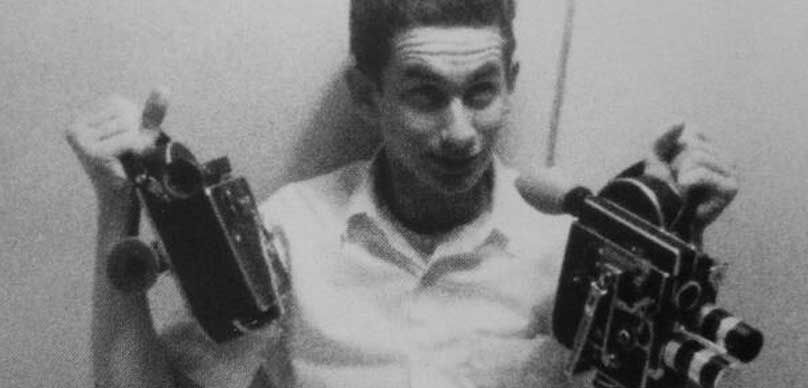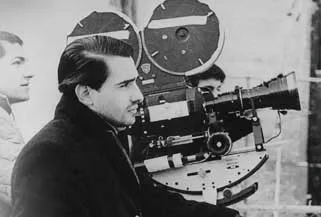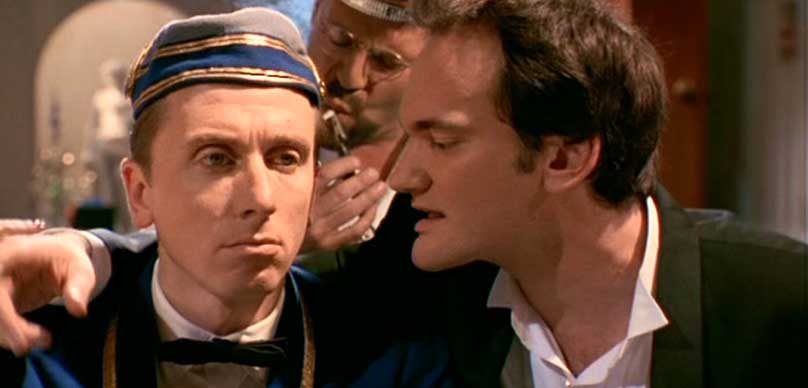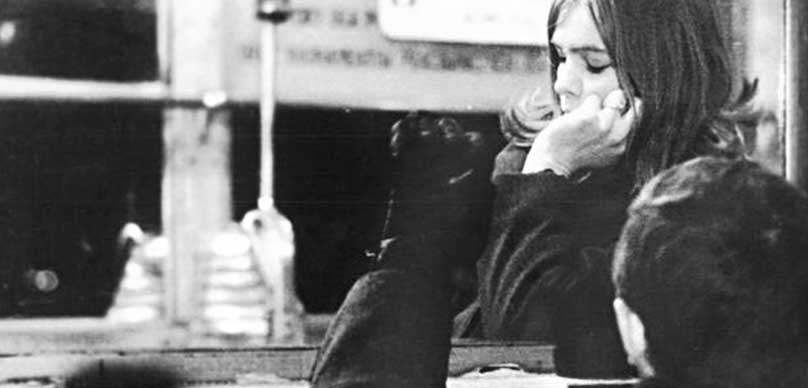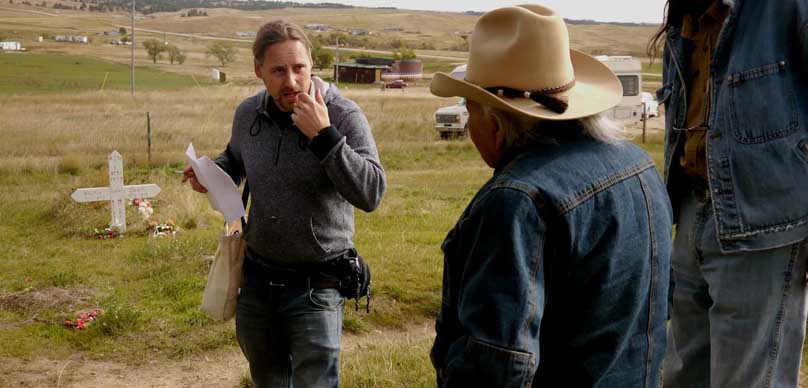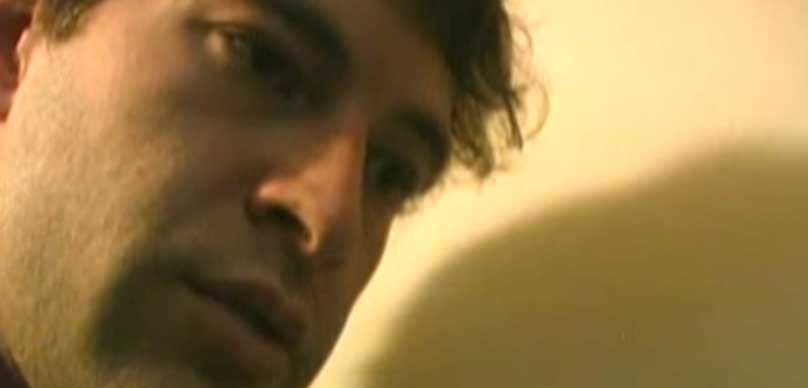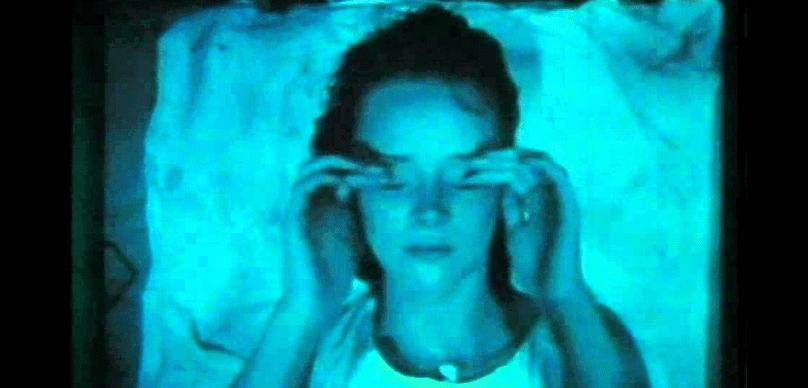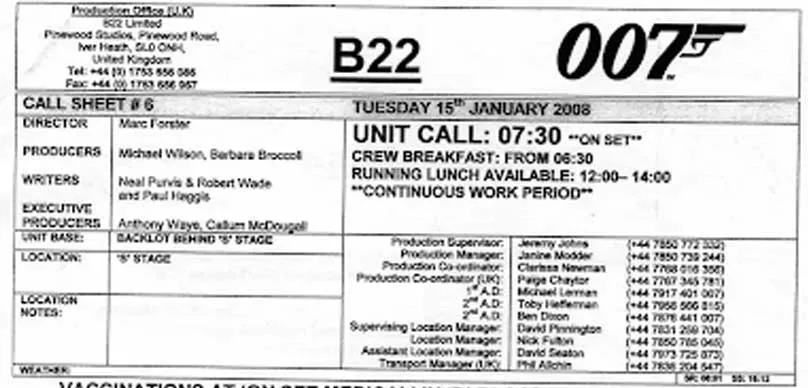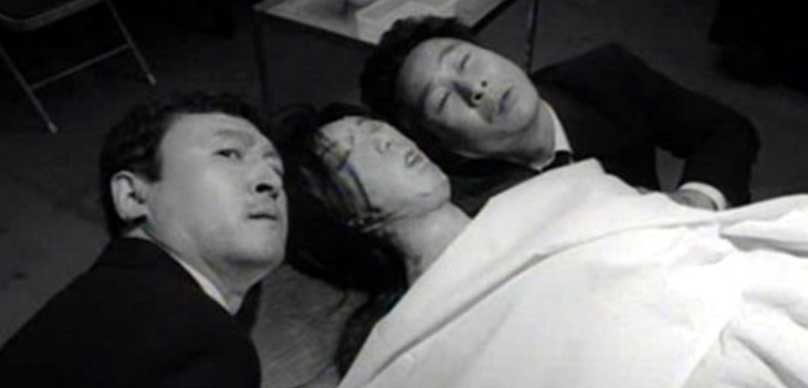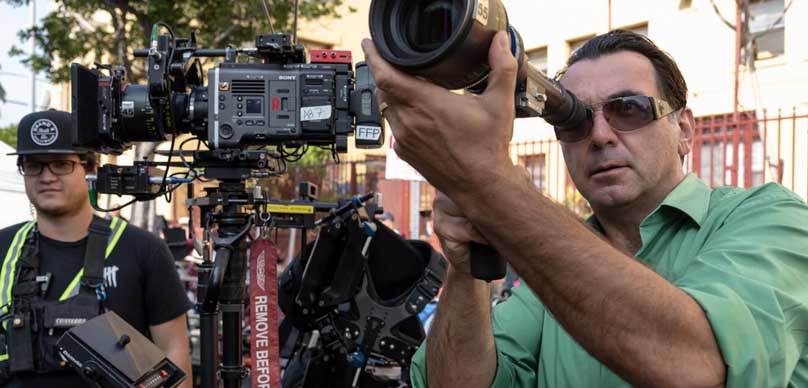Every director experiences a misfire at some point in his/her career. Even Stanley Kubrick, widely considered to be one of the greatest directors that ever lived, felt the bitter string of failure once or twice. It’s as inevitable as the sun coming up each day. For a director as strong-minded and controversial as Quentin Tarantino, it was only a matter of “when”, not “if” his misfire would occur. It’s arguable that he may have had more than one of these ill-advised projects within his filmography, but I feel that most would agree his first brush with failure came when he involved himself in the 1995 anthology feature, FOUR ROOMS.
You can read all of Quentin Tarantino’s Screenplays here.
All but forgotten within Tarantino’s own canon, FOUR ROOMS is only talked about now in hushed whispers in dark corners of movie nerd chat rooms. FOUR ROOMS features the work of four directors—Allison Anders, Alexandre Rockwell, Robert Rodriguez and Tarantino—each contributing a short sequence that when put together, presents the story of Ted (Tim Roth), an anxious bellhop, and the eccentric characters he encounters during his first night of employment at a fictional Los Angeles hotel. While the film admittedly possesses an intriguing executional premise, the film didn’t perform well at the box office, and was met with heaps of scorn by critics. While Tarantino can’t claim 100% of the blame here, his work can certainly be viewed objectively outside of the context of the larger project.
Tarantino’s section, entitled “THE MAN FROM HOLLYWOOD”, occurs as the film’s climax. Rightly so, as Tarantino is arguably the biggest name in the film. His section finds Ted nearing the end of a long, crazy night and called up to the penthouse to deliver a few very specific items to its guests. Upon entering the penthouse, Ted is roped into the aftermath of a boozy Hollywood bender, hosted by film director Chester Rush (Tarantino himself). It’s New Year’s Eve, everyone’s drunk, and their wealth has left them bored and restless. Rush and friends devise a treacherous game- if one of the guests can successfully light his lighter ten consecutive times, he wins Rush’s cherry red Chevy convertible. If the lighter fails to light even once, he loses his pinky finger. Soon enough, Ted finds himself in big dilemma when Rush coaxes him into wielding the hatchet intended for the aforementioned pinkie. Will he take the $1000 offered to him for going through this morbid gamble, or will he cave to fear and lose out on an easy payday?
This is the kind of story that’s perfect for short films. A simple, one-off scenario that creates natural conflict between characters who don’t need a lot of fleshing out. Roth, once again collaborating with his RESERVOIR DOGS and PULP FICTION director, assumes the effete, nebbish expectations of a stereotypical bellhop. It’s not much of an acting challenge on its face, but it certainly pays off in the piece’s ending moments by a huge subversion of audience expectation.
Tarantino has a penchant for casting himself, and he takes advantage of the opportunity afforded by a lower-profile project to give himself a starring role. His Chester Rush character plays like an exaggerated, in-on-the-joke version of himself in real life. Rush is a motormouth with a short temper and a sense of self-importance that isn’t entirely earned. Roth’s PULP FICTION co-star Bruce Willis also makes a glorious, uncredited appearance as one of Rush’s freeloader friends undergoing severe marital troubles. Willis wasn’t credited because he violated SAG rules by appearing in the film for free. Unexpectedly liberated by the constraints of Willis’ public image, Tarantino plays with his celebrity persona by dressing him up as an intellectual type boiling with impotent anger. It’s a deeply funny turn by Willis, the kind I’d like to see him do more often.
Despite being an anthology film with a singular through-story, each director is allowed to collaborate behind the camera with whomever they want. To this end, Tarantino recruits his regular collaborators—producer Lawrence Bender, director of photography Andrzej Sekula, and editor Sally Menke. Taking a cue from Alfred Hitchock’s ROPE (1948), Tarantino strings along a series of long takes to construct his film. Sekula and Tarantino utilize a Steadicam rig to wantonly careen around the penthouse set. Tarantino and Roth also repeatedly break the fourth wall by talking directly to the camera, but the effect is jarring and counterintuitive rather than inspired.
THE MAN FROM HOLLYWOOD is most definitely a Tarantino creation, what with its creative profanity and numerous pop culture and film references. It’s worth noting that a very striking corner has been turned here. Now that he is in a position to directly influence pop culture, Tarantino’s signature references have begun referring back to himself and his creations. For instance, Tarantino’s character not-so-casually mentions that a particular drink was a “tasty beverage”. Of course, Samuel L. Jackson made the line famous in PULP FICTION. It’s a very specific collection of words, first spoken by a black man and now—like so many arbiters of “cool” in our culture—appropriated by a white man trying to trade in his inherent nerdiness for an effortless swagger.
THE MAN FROM HOLLYWOOD also exists as a distilled example of Tarantino’s most potent signature conceit: the slow-burn suspense sequence capped off by a short explosion of violence. This is manifested in the film’s pinkie bet centerpiece, and is a classic Tarantino creation. We see the elements of this absurdly-complicated bet slowly come together throughout the entirety of the piece, with Tarantino’s character verbally building anticipation with each passing minute. When the inevitable moment of violence comes, it still arrives with a great deal of surprise and unmitigated glee.
While they aren’t working directly with each other, THE MAN FROM HOLLYWOOD finds Tarantino in his first collaboration with fellow independent maverick and close personal friend, Robert Rodriguez. Tarantino would go on to script and star in FROM DUSK TILL DAWN for Rodriguez, beginning a decade-long fascination with each other that would result in shared directing projects like SIN CITY (2005) and GRINDHOUSE (2007).
When all is said and done however, THE MAN FROM HOLLYWOOD, like the larger FOUR ROOMS project encapsulating it, is a dud. Tarantino’s contribution is most likely the strongest part of the film, but it’s dramatically/comically inert. Rather, it feels more like an indulgent victory lap celebrating Tarantino’s ascent into the Hollywood elite, painted in the broad strokes of caricature as a means to veil said victory lap. The aftermath of the pinkie bet is easily the best part about the film, but it only comes after a long, bloated slog through boring-town. Thankfully, the low profile of the film upon its release didn’t have any sort of long-term negative effect on Tarantino’s career. Ultimately, THE MAN FROM HOLLYWOODis forgivable as an act of experimentation, but shows no real growth on behalf of Tarantino besides more practice with long, complicated Steadicam takes.
Sponsored by: Special.tv – Stream Independent
Author Cameron Beyl is the creator of The Directors Series and an award-winning filmmaker of narrative features, shorts, and music videos. His work has screened at numerous film festivals and museums, in addition to being featured on tastemaking online media platforms like Vice Creators Project, Slate, Popular Mechanics, and Indiewire.
THE DIRECTORS SERIES is an educational collection of video and text essays by filmmaker Cameron Beyl exploring the works of contemporary and classic film directors.

